Kitchen benchtops take centre stage in any kitchen. After all, your benchtop not only sets the style and mood of your space but also needs to stand up to years of daily wear and tear. From hot pans to everyday spills, scratches, and stains. Your kitchen benchtop takes the brunt of it all.
At Harrington Kitchens, we design long-lasting kitchens, so we’ve worked with every benchtop option you can imagine. Today, we’re spilling the tea on the 6 most popular kitchen benchtop options our clients ask about.
Here we break down the pros and cons of each material. This should help you make a confident, informed choice for your kitchen benchtop selection. Whether you’re after luxury, durability, budget-friendliness, or something in between, we’ve got you covered.
Sintered Stone Kitchen Benchtops: A Smart Investment for Your Kitchen Renovation
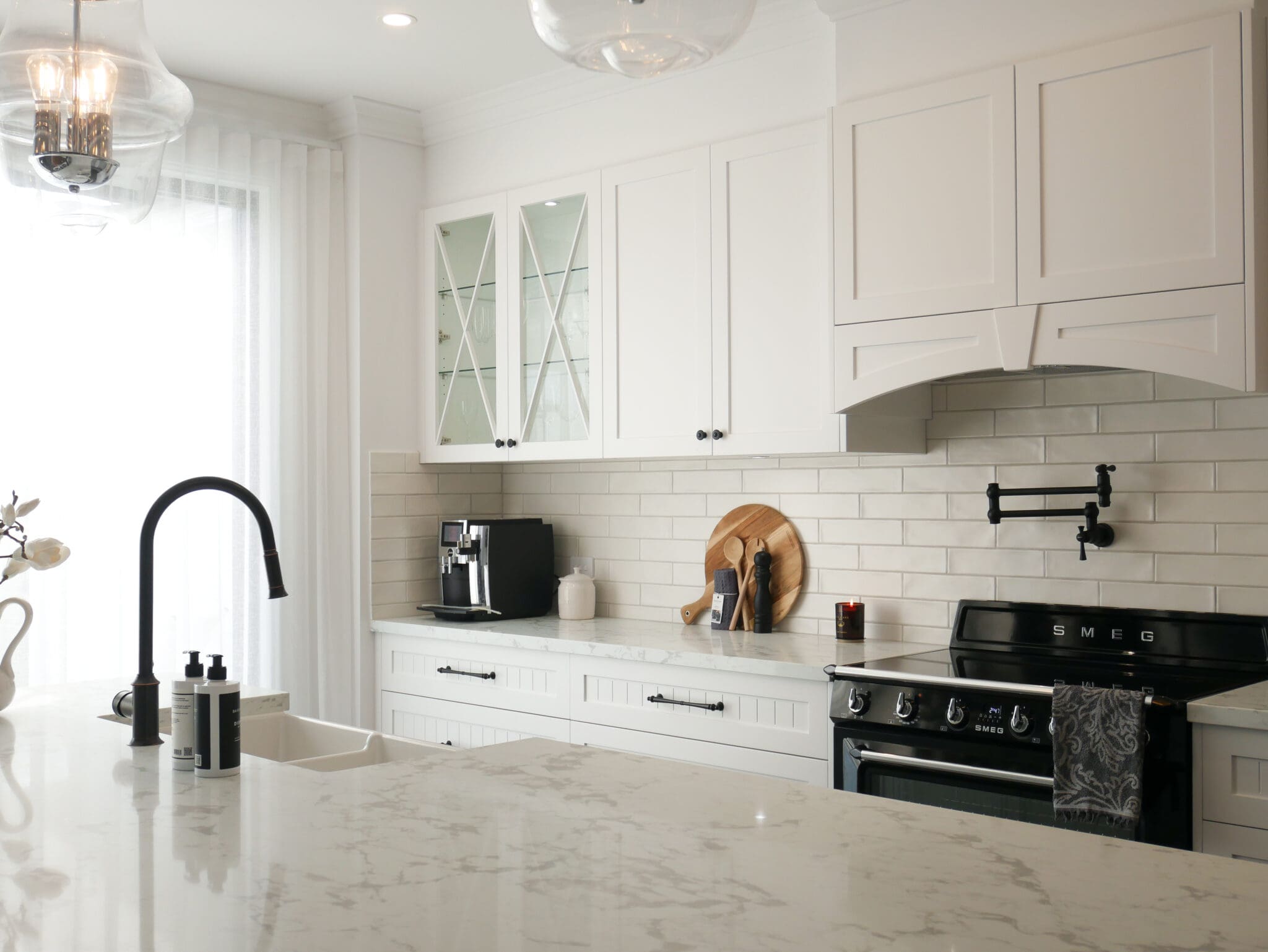
One of the most exciting materials gaining popularity is sintered stone. Sintered stone is rapidly emerging as an engineered stone alternative for kitchen benchtops. It’s stylish (natural stone benchtop look without the price tag), incredibly durable, and perfect for busy kitchens.
Pros of Sintered Stone Kitchen Benchtops
✅ Safer for everyone: No silica means no risk to installers or your family.
✅ Built to last: These materials are scratch-resistant, heat-resistant, stain-resistant and UV resistant – ideal for everyday kitchen use both indoors and outdoors.
✅ Easy to clean: Non-porous surfaces mean no fuss when it comes to maintenance.
✅ Stylish choices: From sleek modern looks to classic stone-inspired designs, there’s something for every taste.
Cons of Sintered Stone Kitchen Benchtops
❌ Costs can vary. Some newer materials may cost a bit more than the once-popular engineered stone.
❌ Installation: Requires professional installation due to its weight and the need for a specialised tool.
❌ Repair Costs: While durable, if it does get damaged, repairs can be costly.
❌ Design: The pattern is only on one surface, so in some cases the core or the ‘biscuit’ of the slab can differ from the surface colour or pattern.
Laminate Kitchen Benchtops: The Smart Choice for Cost-Conscious Kitchen Renovations
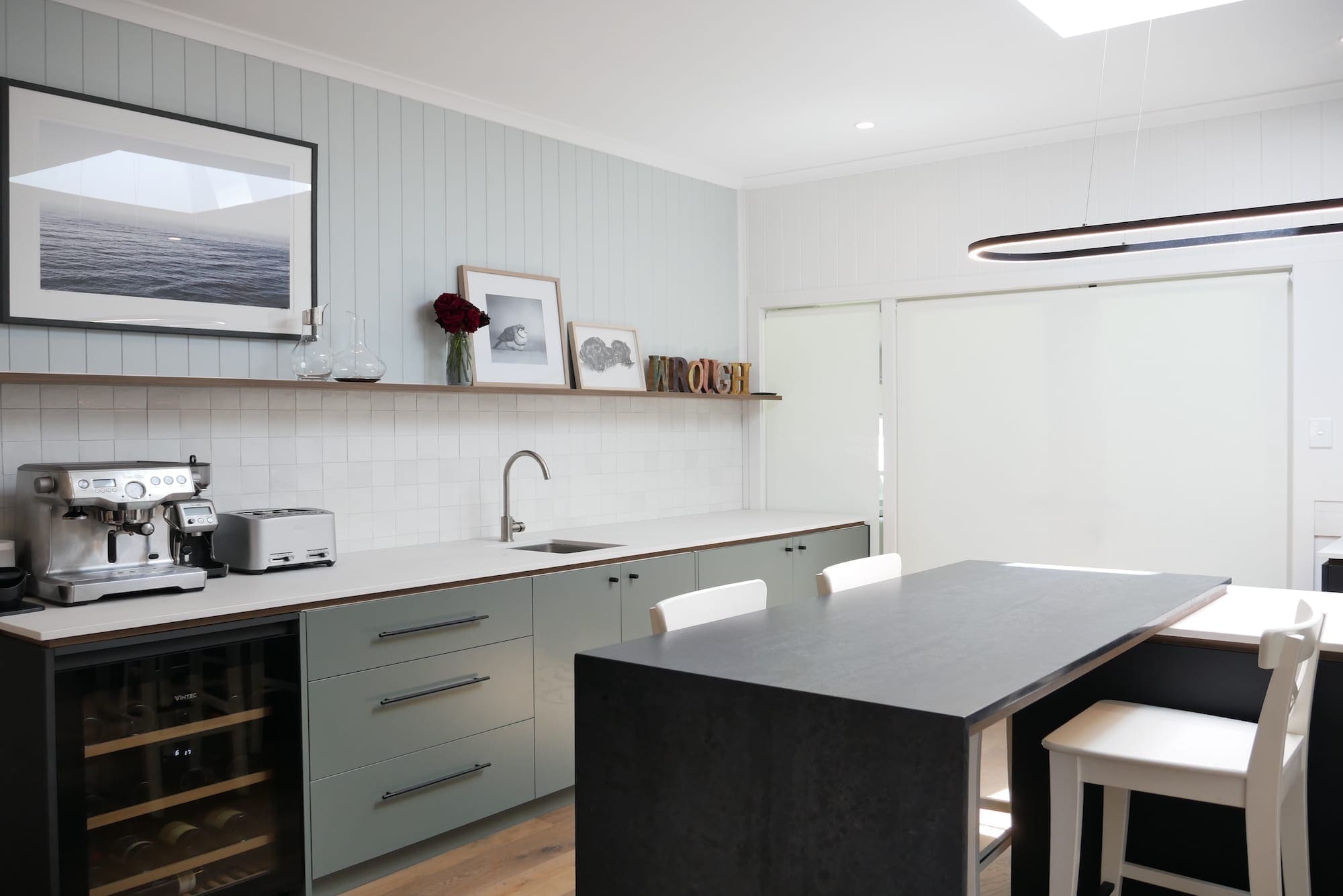
If you’re working with a tight kitchen renovation budget, don’t worry! You can still achieve a beautiful look without spending a fortune. Laminate benchtops are a smart, cost-effective option that offers style and flexibility without breaking the bank.
Laminate is available in many colours, patterns, and finishes. Many of these look like more expensive materials, such as timber, stone, or polished concrete.
Pros of Laminate Kitchen Benchtops
✅ Budget-friendly: One of the most affordable benchtop options available.
✅ Huge variety: Choose from a vast selection of colours, textures, and styles to match any kitchen design.
✅ Quick installation: It’s easier and faster to install than many other materials.
Cons of Laminate Kitchen Benchtops
❌ Less durable under heat: Laminate can scorch. Use heat mats under hot pots and pans.
❌ Can scratch: It’s not as tough as stone or porcelain. Use a cutting board to avoid damage.
❌ Not repairable: Unlike some solid surfaces, you generally can’t repair scratches or burns in laminate.
Timber Kitchen Benchtops: Warmth and Natural Beauty for Your Kitchen
If you think timber benchtops are a thing of the past, think again! Timber is making a stylish comeback in modern kitchens, and it’s easy to see why.
There’s also a huge variety of timber species to choose from, so you can tailor the look of your kitchen benchtop to suit your style.
Want something light and fresh? Consider ash or oak. Looking for a dramatic contrast? Rich, dark timbers like walnut can make a bold statement, especially when paired with light cabinetry.
Pros of Timber Kitchen Benchtops
✅ Natural warmth: Timber brings a soft, organic feel to kitchens, making the space more inviting.
✅ Highly customisable: Choose from a wide range of wood tones, grains, and finishes.
✅ Eco-conscious appeal: Sustainably sourced timber can be a more environmentally friendly choice.
Cons of Timber Kitchen Benchtops
❌ Needs regular maintenance: Timber must be sealed to protect it. Generally, every 12 – 18 months you will need to complete a benchtop resurfacing to keep your timber benchtop looking fresh.
❌ Sensitive to heat and water: While beautiful, timber is more prone to water damage and burns. Always use trivets and wipe spills quickly.
❌ Can scratch or dent: It’s a softer surface compared to stone or laminate. Gentle handling is key.
Marble Kitchen Benchtops: Timeless Elegance for Your Space
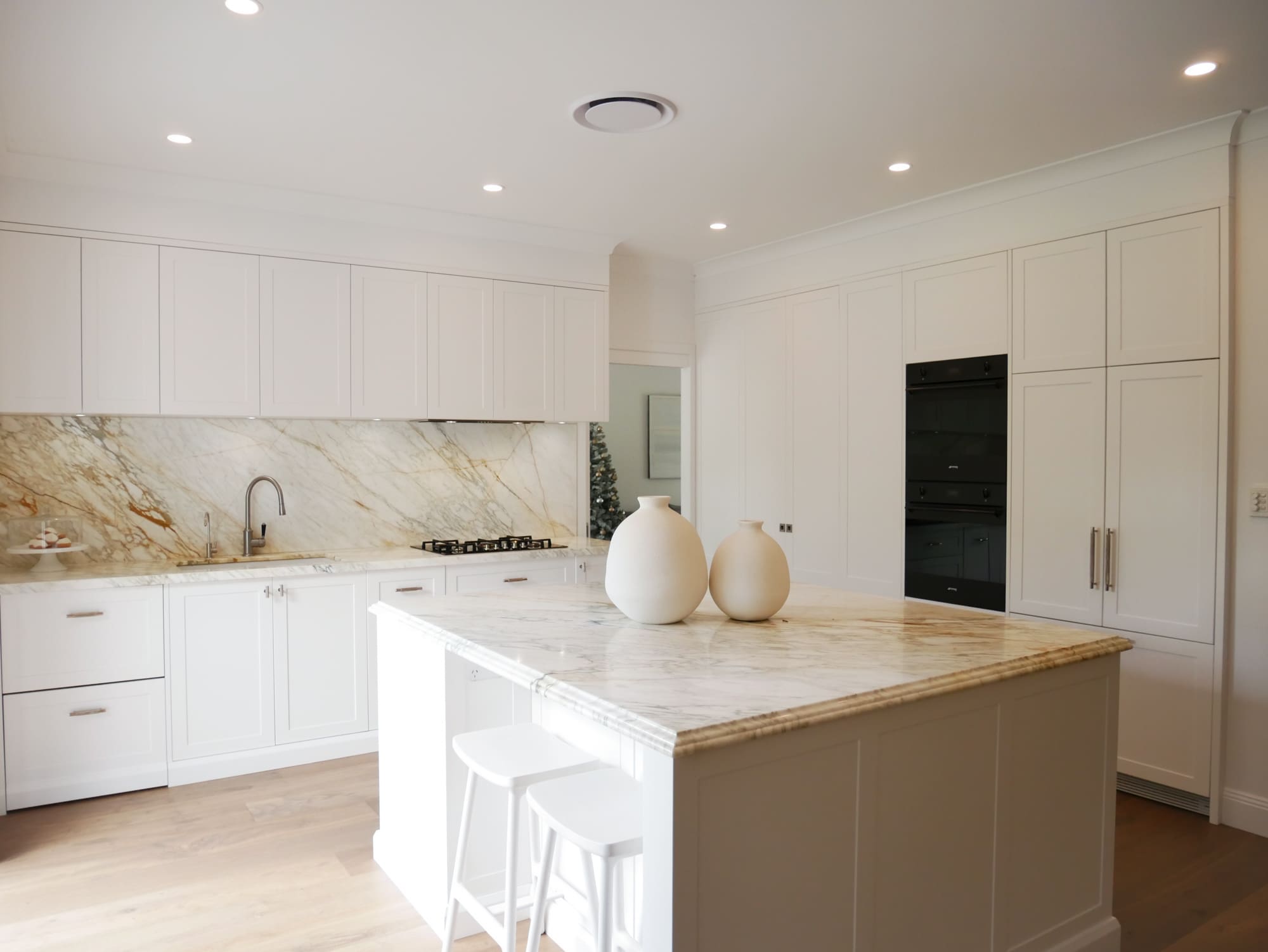
There’s no denying it, marble is stunning. With its unique veining and natural beauty, it’s one of the most elegant and timeless materials you can use in a kitchen. Whether as a benchtop or splashback, marble adds instant luxury and sophistication to any space.
But as beautiful as it is, your marble benchtop comes with both a hefty price tag and some important care requirements. It’s a natural stone that can be surprisingly delicate in a busy kitchen environment. So it’s worth weighing up the pros and cons before investing.
Pros of Marble Kitchen Benchtops
✅ Timeless beauty: No two marble slabs are the same—each one has its unique patterns and veining.
✅ Luxurious appeal: Instantly elevates the look of any kitchen with a high-end, classic feel.
✅ Versatile design: Works beautifully in everything from traditional to ultra-modern kitchens.
Cons of Marble Kitchen Benchtops
❌ High cost: Marble is one of the more expensive benchtop options on the market.
❌ Porous surface: It can easily absorb spills like wine, lemon juice, or oil—leading to stains if not cleaned quickly.
❌ Prone to etching and scratching: Acidic foods and rough use can leave dull marks or damage the surface.
Porcelain Kitchen Benchtops: The Modern, Low-Maintenance Option
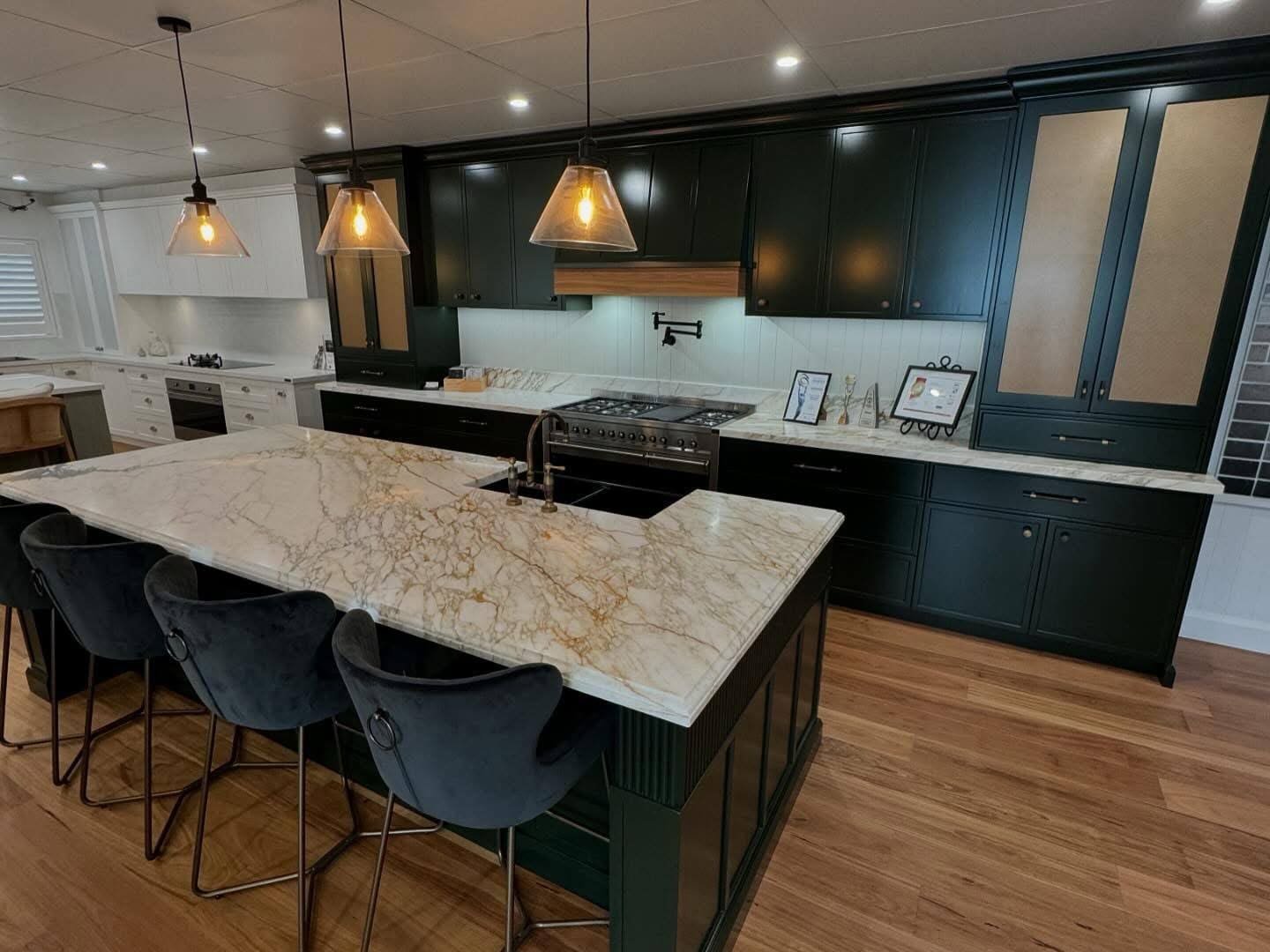
Porcelain benchtops are quickly becoming a favourite choice among homeowners and kitchen designers, and for good reason. This material is tough, stylish, and hygienic, making it ideal for both busy families and design lovers alike. Think of it as a stronger, sleeker version of tile, only much larger and way more sophisticated.
The best part? Porcelain benchtops can beautifully mimic the look of marble giving you the design freedom you want.
Pros of Porcelain Kitchen Benchtops
✅ Extremely durable: Heat, stain, and scratch-resistant. Perfect for high-use kitchens.
✅ Low maintenance: A quick wipe with soap and water is usually all it takes.
✅ Great for indoor & outdoor use: Its strength and UV resistance makes it a great option for an outdoor kitchen benchtop.
Cons of Porcelain Kitchen Benchtops
❌ Labour intensive: Cutting and installing porcelain requires specialist tools and experience.
❌ Difficult to repair: While durable, if chips or damage occur, repairs can be costly and complex.
❌ Can be pricey: While more affordable than some natural stones, porcelain can still sit on the higher end, especially for premium brands
Safer, Stylish, and Strong: The Rise of Silica-Free Kitchen Surfaces
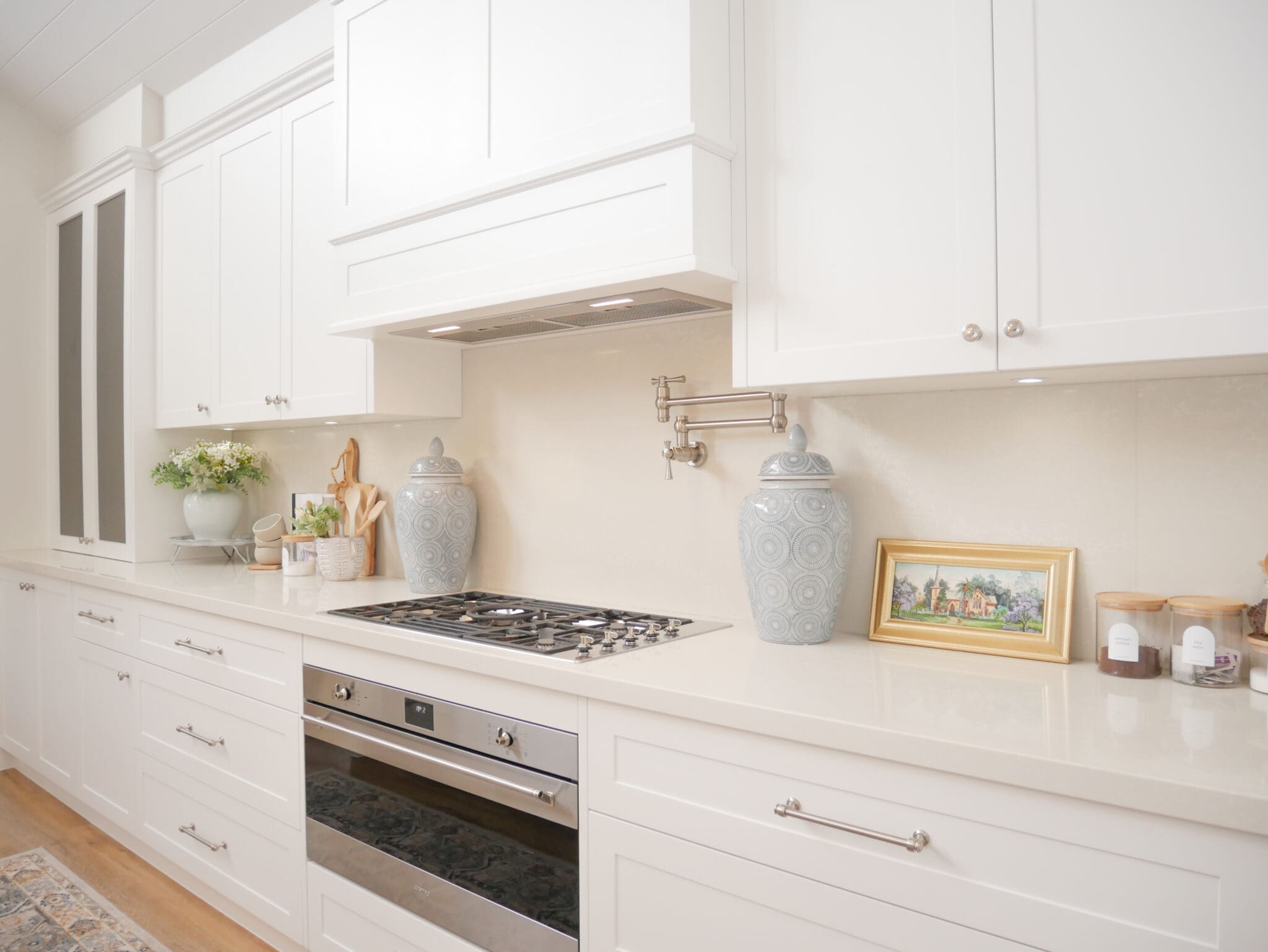
If you love the look of engineered stone kitchen benchtops but are concerned about the health risks associated with crystalline silica, there’s good news! Silica-free surfaces are now widely available and can be a little cheaper than sintered stone benchtops. Plus they are available in a broad range of colours, patterns, and finishes.
Pros of Crystalline Silica-Free
✅ Silica-free and safe: Created to eliminate the health risks associated with crystalline silica exposure.
✅ Stylish and versatile: Mimics the look of natural stone, and concrete, or can give you that famous marble look benchtop design without the cost.
✅ Low maintenance: Non-porous and resistant to stains, making it easy to keep clean.
✅ Durable: Built to withstand everyday kitchen use with scratch and heat resistance.
Cons of Crystalline Silica-Free
❌ Can be more expensive: Some silica-free surfaces may come at a slightly higher price point due to their advanced manufacturing.
❌ Availability varies: Not all suppliers may stock a wide range yet, so it’s worth shopping around.
❌ Not outdoor-friendly: These materials are not suitable for outdoor use and can be damaged by direct heat.
How to Choose the Perfect Kitchen Benchtop: Pros, Cons & Expert Advice
Kitchen benchtops vary significantly based on price and quality. When it comes to selecting which kitchen benchtop is best, you need to weigh up the pros and cons of each benchtop option. Then you can decide which kitchen benchtop option is best suited to the use of your kitchen.
For example, if you’re a messy cook or have young kids, choose a tough, low-maintenance surface like sintered stone or porcelain. If the budget is tight, laminate still gives you great style without the high price.
To discover more about kitchen benchtops, we invite you to check out our dedicated kitchen benchtop page. Here, we address common questions and delve into the various edging options available for your kitchen benchtops.
If you need more guidance for your kitchen benchtop selection. Our team of kitchen design professionals can assist.
With years of experience advising and installing a wide range of kitchen benchtops, our team can help with your benchtop selection. You can contact our friendly kitchen design team here by filling out our contact form. And if you’d like to see our benchtops in person, feel free to visit our kitchen showrooms in Narellan or Bowral.

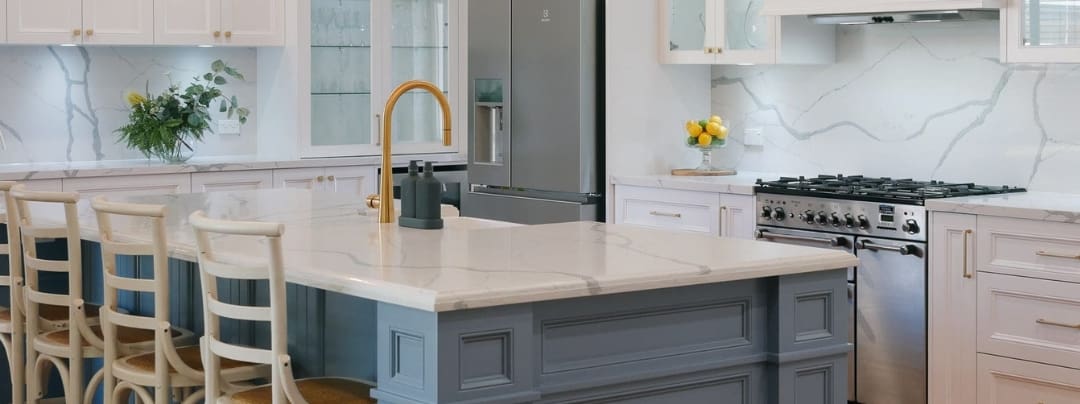
Recent Comments